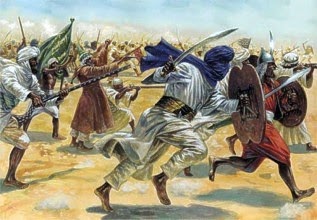Partition of Bengal by Taimoor sodhar
Background
Bengal was the biggest province with a population of 78 million. It had a vast area and was an unwieldy administrative unit. The whole province was under one Lieutenant Governor who could not look after the administrative requirements of such a vast area alone. It was not possible for the Lt. Governor to go around the province whenever there was a dire need of such tours. Consequently a major portion of the province remained neglected due to its unwieldiness. In view of its size and enormous population it was felt that
the province of Bengal should be divided into two parts in order to facilitate the administrative requirement of the vast area.
Partition
Lord Curzon became the viceroy of India in 1899. He was and able and efficient administrator. He undertook an extensive tour of the province of Bengal and felt that the province was too big to be administrated effectively. The provincial Governors had already complained about the administrative difficulties faced by them in the large province. They had recommended the partition of the province in view of its size and big population.
A number of partition proposals were viewed and discussed which, however, could not materialize. Lord Curzon decided to divide the province into two provinces. He prepared a comprehensive plan of the partition of Bengal in 1905 and sent it to England for approval. The British Crown gave approval to the partition plan and the province of Bengal was divided into two parts on 16th October 1905 named as Western Bengal and Eastern Bengal. The new province of Eastern Bengal consisted of Dacca as capital, Memansingh, Chittagong, Assam, Rajshahi, Khulna, Rangpur and Bogra as the constituted districts.
Reaction of Muslims Toward Partition
In the combined province of Bengal the Muslims were a suppressed and dominated class of society. The Hindus had monopolized trade and Government services which aggravated the economic condition of the Muslims. The new province of Eastern Bengal brought happier prospects of political and economic life for the Muslims. The Muslims overnight turned into majority by the creation of the new province. The Muslims were 18 million out of the total population of 31 million in the new province. The partition of Bengal provided chances of great progress to the Muslims who formed the majority group in the new set up. The partition of Bengal provided them with a chance to rehabilitate their social position. They hoped that their social status would get a tremendous boost in the new province. The Muslims, therefore, expressed their utmost happiness over the partition of Bengal. They offered their gratification in a loyal way to the Government for taking a step for their social, economic and political uplift.
Reaction of Hindus Toward Partition
The Hindus reacted toward the partition of Bengal in a hostile and violent manner. The Hindus could never support a move which was to bring prosperity and happiness to the Muslims.
Reasons of opposing partition
The reasons for Hindu opposition to the partition were as follows:
1. The Hindus believed that they would come under the domination of the Muslim majority in the new province and their superior position would be downgraded to the interior status.
2. As the provincial High Court and other judicial bodies were to be shifted to Dacca, the Hindus lawyers feared that their legal practice would be affected.
3. Since Dacca was to become the centre of journalistic and other academic activities, the Hindu press and media believed that from now onward the Muslim point of view would be projected in the newspapers and magazines. They also feared that their income would seriously be lessened.
4. The Hindu landlords, capitalists and traders did not like the partition as it was to put an end to their exploitation of the poor Muslims.
5. Before the partition of Bengal the Hindus enjoyed dominant position in the political sphere of the province over the Muslims. The new set up was to put an end to their superior political position and their political dominance over the Muslims will end.
Reaction
The Hindus launched an intensive movement against the partition of Bengal. They termed the partition as degrading and an insult to the national character of the Hindu population. Religious colour was given to the agitation and the partition was termed as the dissection of the Sacred Cow Mother, in order to arouse deep opposition by the Hindu masses. They considered the partition as an attempt to sow the seeds of hatred and discontentment among the Indian people to weaken the national movements for independence.
The day of partition was declared as a national tragedy. Strikes were held throughout the country. The Indian National Congress also jumped in to support the agitation against the partition. The Hindu students put up violent demonstration against the partition. The Congress severely criticized the partition in its annual session of 1906.
The Hindus agitation soon turned into a violent reaction. The people disobeyed Government orders by refusing to pay taxes and rentals. Communal clashes erupted at a number of places which aggravated the law and order situation in the country. Bombs were thrown and attacks were made on the lives of the British people. Swadeshi Movement was organized by which the foreign goods were boycotted. The train carrying the Governor of the Eastern Bengal was derailed and an attempt was made on Viceroy’s life which failed.
Annulment of the Partition
The vigorous Hindu agitation rocked the Government which could not withstand the extreme pressure of the movement. The Hindus threatened the Government to boycott the forthcoming tour of India of the King George. The threat proved successful and the British Government succumbed to the Hindus agitation. The partition of Bengal was ultimately annulled on 12th December, 1911 at a Royal meeting known as Delhi Darbar where the King George announced the decision of annulment to the extreme dismay of the Muslims of Bengal.






Comments
Post a Comment